
Introduction
Everything around us undoubtedly has a great influence on us, that is why the task of humanity is constant because our environment is complex, and so is every learning we extract from it, this time we continue to relate generally with the center of gravity and thus with any object, body or particle system.
We will also continue to carry out small but significant practical experiences in order to have a better understanding of what we wish to share with all of you, and for this, the most important thing is that the materials to be implemented are easily accessible in our homes since our main purpose is to demonstrate that science is everywhere.
It is always important to emphasize that every body or object around us is made up of a certain number of particles, and which will have a particular weight, that is, individual, and whose resultant force of this set of particles gives us the possibility of having a concentric point of all the above individual forces described above, and from this concentric point we can have the balance of the entire system to analyze, so this is what we will continue to do in this opportunity through very simple examples.
Center of gravity of some objects or particle systems
If we look around us we will undoubtedly find countless objects or bodies made up of any type of particles, and all of them under the effects of the Earth's gravity, and this gravity when multiplied by its mass gives us the weight, and remember that the action of all the particular forces parallel to each other give us a resultant or concentric force, where we will find the center of gravity of the object or body to be analyzed.
Now we will show you an example where we can visualize the center of gravity described above and this can be seen in the following images, first let's know the materials to use.
- A small piece of cork.
- Dos alfileres o agujas.
- Two height sticks.
- Two electrodes or welding rods.
- A ruler or any other rectangular surface, such as a piece of wood.
Before moving on to our small practical example, I will show you through the following image what we want to do, as you can see in figure 1 below:
Figure 1. The Balancer and his seesaw
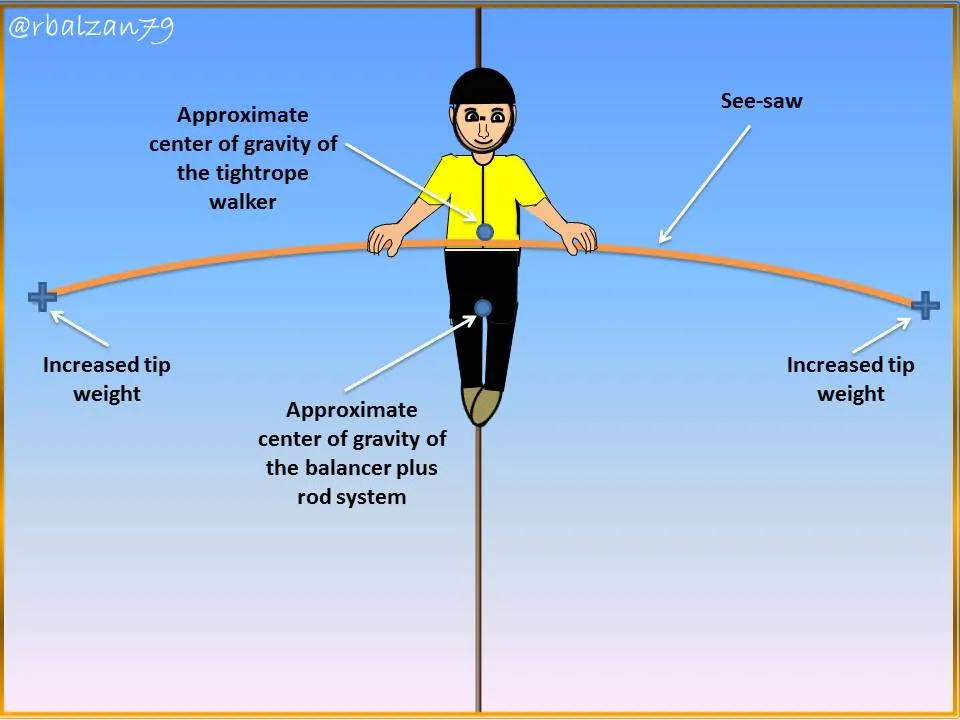
In the previous figure you could see a tightrope walker, and he uses a long rod called a seesaw, and this rod allows the tightrope walker to precisely balance to stay on the rope, you can see how both ends are heavier than in the center, for this reason we see how this rod curves down, and the whole system (tightrope walker ¬ + seesaw) have the center of gravity below the center of gravity of the tightrope walker alone, this gives greater stability or balance of the system described above.
Now, my dear readers, our objective is to make a small tightrope walker with the materials described above, which you can see below:
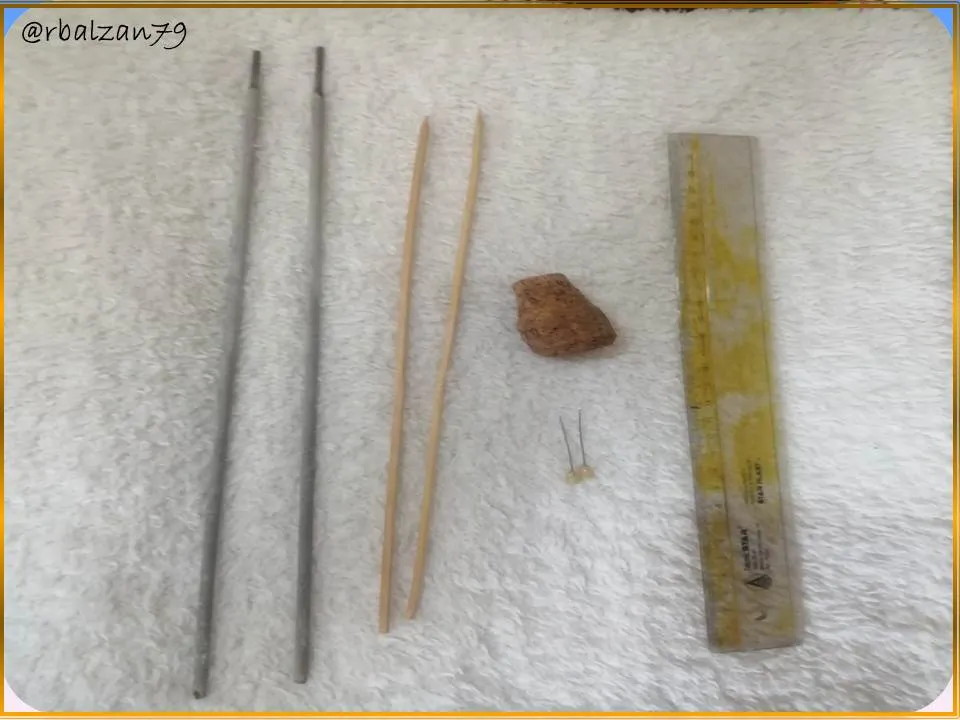
First of all, we will determine the place where our tightrope walker should stay as follows:

Now with our cork and pins we will make our tightrope walker and we will see if he stands on the ruler:
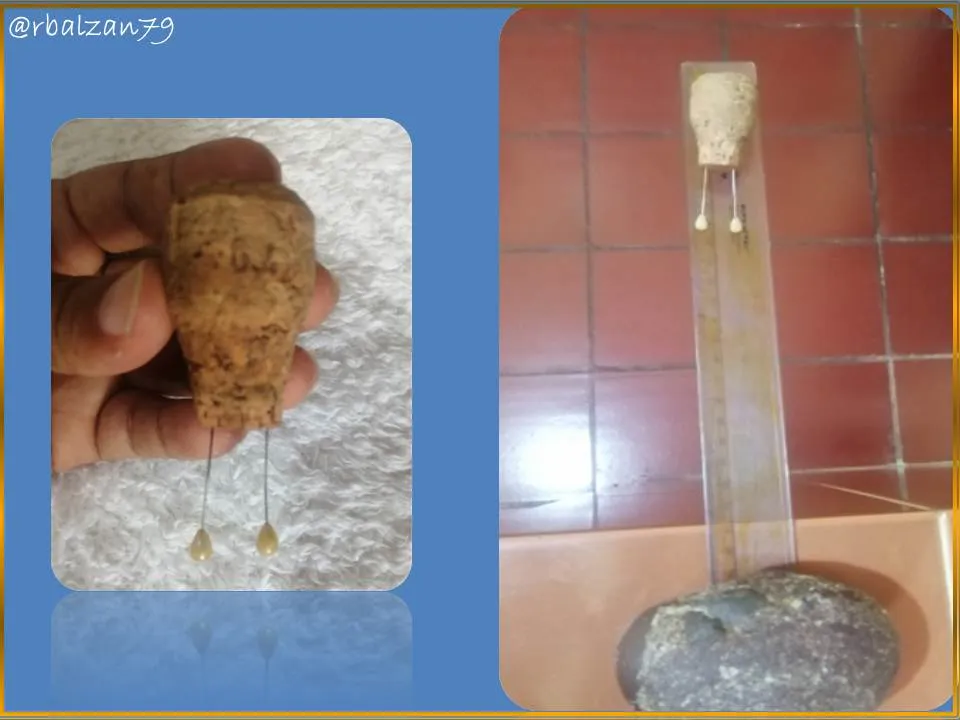
Clearly it does not stand upright, now our task is to create a system that stays in balance, let's try including the high sticks to our little tightrope walker.
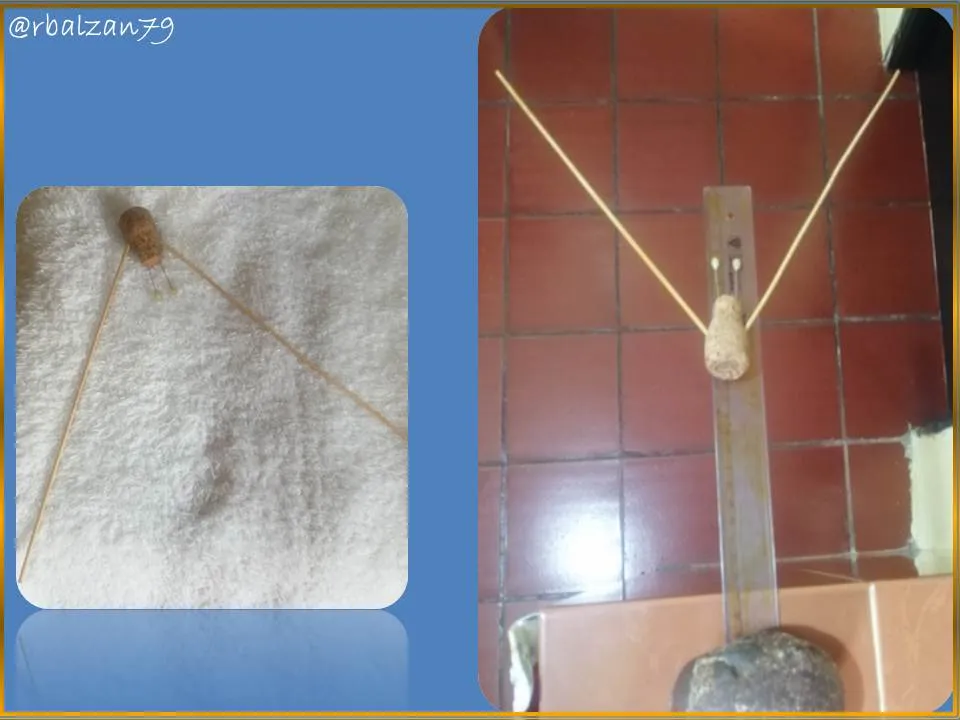
In the previous image we also failed to keep the system in balance, now let's try with the electrodes or welding rods.
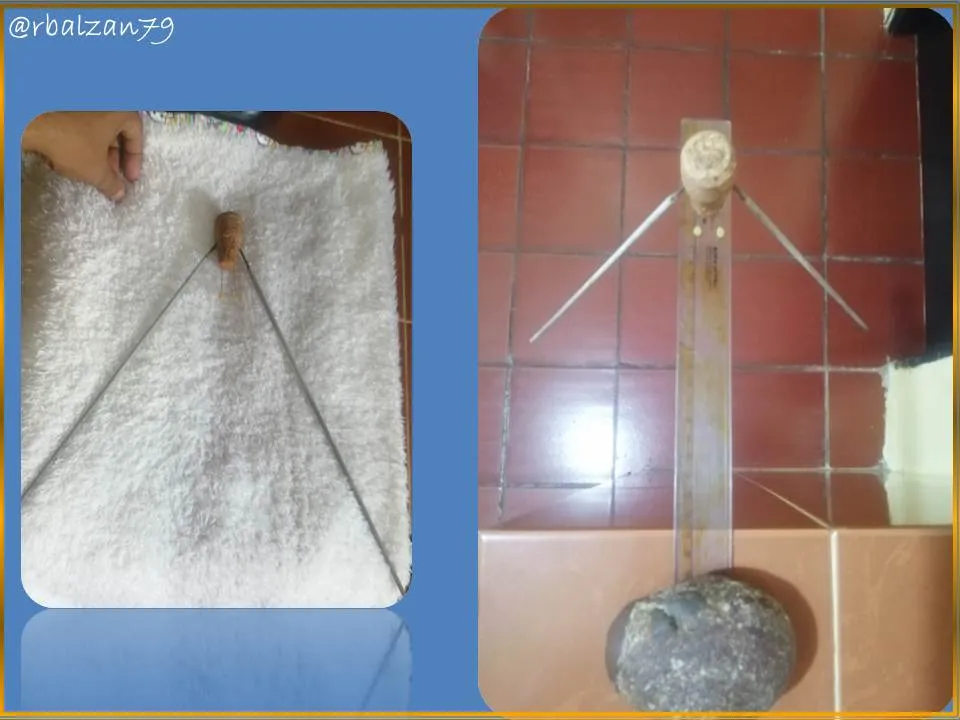
In this way we have achieved how our particle system (tightrope walker + electrodes) manages to stay in balance by observing our cork tightrope walker standing, and this was due to the fact that the electrodes are heavier and thus lowering the center of gravity of the entire particle system mentioned above in the same way as in the example of figure 1 of the tightrope walker and his seesaw, let's see our tightrope walker from another profile.
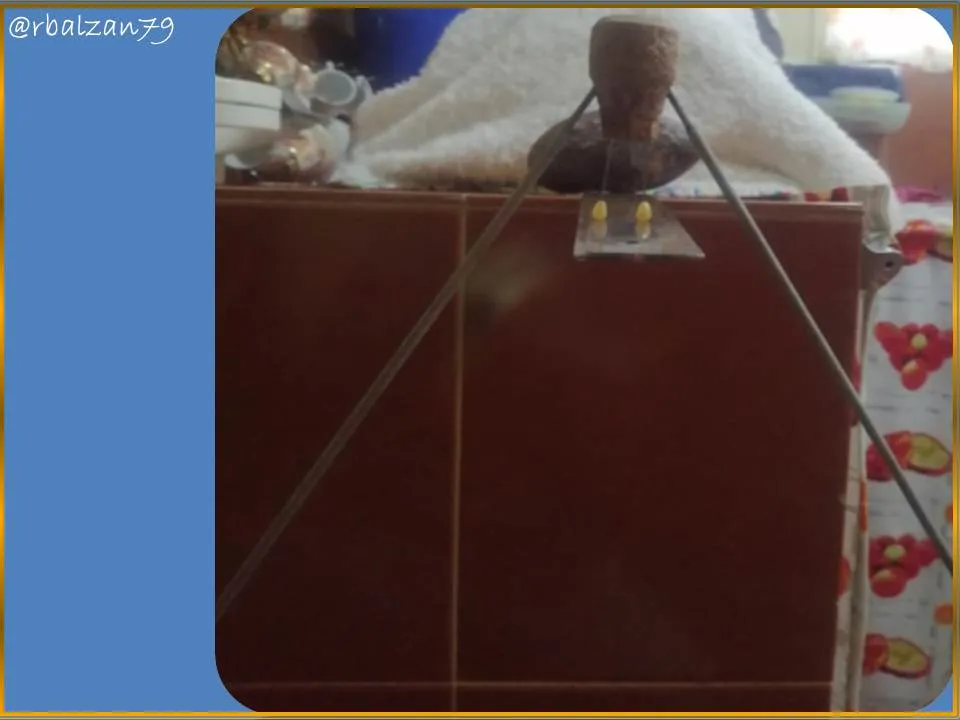
Finally, we will see if our particle system is in equilibrium with a single pin.
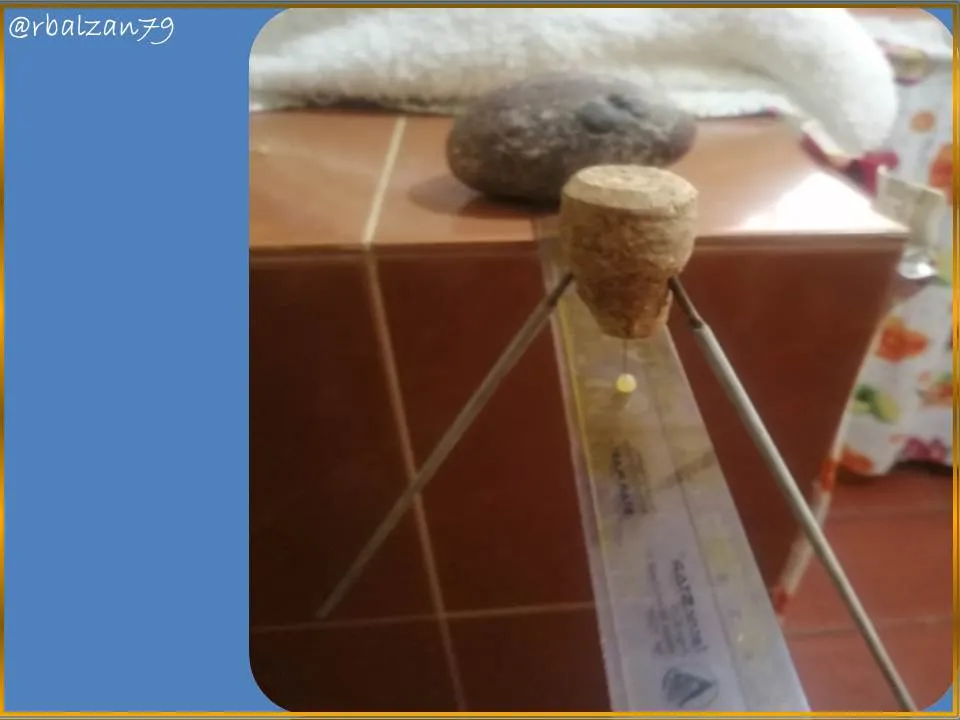
We clearly notice that our tightrope walker stands upright despite having only one pin as a support, and with it the whole particle system.
Conclusion
We continue demonstrating how with very simple examples we can find the center of gravity of a particle system, and the same, we do it with simple materials that each of you can find at home and thus verify for yourselves how we can do science at home.
Until another time my dear readers of @Hive.blog, especially the members of the great @stemsocial community, to whom I strongly recommend to be part of this great project, because it highlights the excellent work of academia and the wonderful work of the entire scientific field.
Note: All images are my own, photographed with the Samsung Galaxy J2 Pro camera, and the animated gif was made with Photo Scape.
Bibliographic references consulted and recommended
[1]Locating the Human Center of Gravity.
